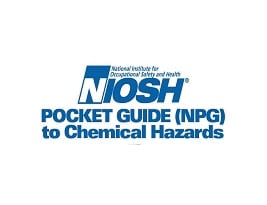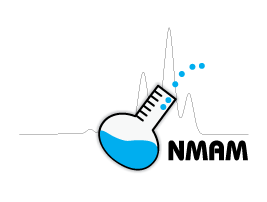Sodium Hydroxide

Overview
CAS No. 1310-73-2
Sodium hydroxide (NaOH) has no smell. It is made of solid white crystals that absorb water from the air. Sodium hydroxide is caustic. Sodium hydroxide can harm workers who come in contact with it. The level of harm depends upon the amount, duration, and activity. It can burn the eyes, skin, and inner membranes, and cause temporary hair loss.
Manufacturers may use sodium hydroxide to produce soaps, rayon, paper, products that explode, dyes, and petroleum products. Other tasks that may use sodium hydroxide include processing cotton fabric, metal cleaning and processing, oxide coating, electroplating, and electrolytic extraction. It is often present in commercial drain and oven cleaners.
Some examples of workers who are at risk of exposure to sodium hydroxide include those who
- Use bleach, oven cleaners, and drain cleaners
- Work in food processing plants
- Work in public water treatment plants
- Use sodium hydroxide for making paper, glass, detergents, soaps, and other products
- Mine alumina and produce aluminum
NIOSH recommends that employers use a Hierarchy of Controls to prevent injury.
If you work in an industry that uses sodium hydroxide:
- Read the chemical label and the Safety Data Sheet. They explain how it can harm you and how to protect yourself.
- Visit NIOSH’s page on Managing Chemical Safety in the Workplace, where you can learn more about preventing contact with chemicals in the workplace.
The following resources provide information about workplace exposure to sodium hydroxide. Useful search terms for sodium hydroxide include “lye”, “caustic soda”, “soda lye”, and “sodium hydrate”.
NIOSH Chemical Resource
Related NIOSH Resources
- NIOSHTIC-2 search results on Sodium Hydroxide– NIOSHTIC-2 is a searchable database of NIOSH-supported worker safety and health publications, documents, grant reports, and journal articles.
Selected Publications
- NIOSH Skin Notation Profiles: Sodium Hydroxide (NaOH): DHHS Publication Number 2011-150 (2011) This Skin Notation Profile provides the SK assignment and supportive data for sodium hydroxide (NaOH; CAS No. 1310–73–2).
- Criteria for a Recommended Standard: Occupational Exposure to Sodium Hydroxide DHHS (NIOSH) Publication No. No.76-105 (1975). Presents a standard to prevent the harmful effects of exposure to Sodium Hydroxide over a working lifetime.
- NMAM: Alkaline Dusts (No. 7401)
Related Resources
- Agency for Toxic Substances Disease Registry (ATSDR) Medical Management Guidelines (MMGs): Sodium Hydroxide
- ATSDR – ToxFAQs: Sodium Hydroxide
- ATSDR Toxicological Substances Profile for Sodium Hydroxide
- EPA CompTox Chemicals Dashboard
- OSHA Occupational Chemical Database: Sodium Hydroxide
- OSHA Hazard Communication
- NLM ChemIDplus Sodium Hydroxide
- NLM Pub Chem Compound Summary: Sodium Hydroxide
- New Jersey Hazardous Substance Fact Sheets: Sodium Hydroxide
International Resources
- ILO: International Chemical Safety Data Card: Sodium Hydroxide
- Canadian Centre for Occupational Health and Safety (CCOHS): Sodium Hydroxide
- European Chemicals Agency (ECHA) Substance Infocard: Sodium Hydroxide
- Gestis Substance Database
- IPCS INCHEM: Internationally Peer Reviewed Chemical Safety Information
- OECD Global Portal to Information on Chemical Substances



